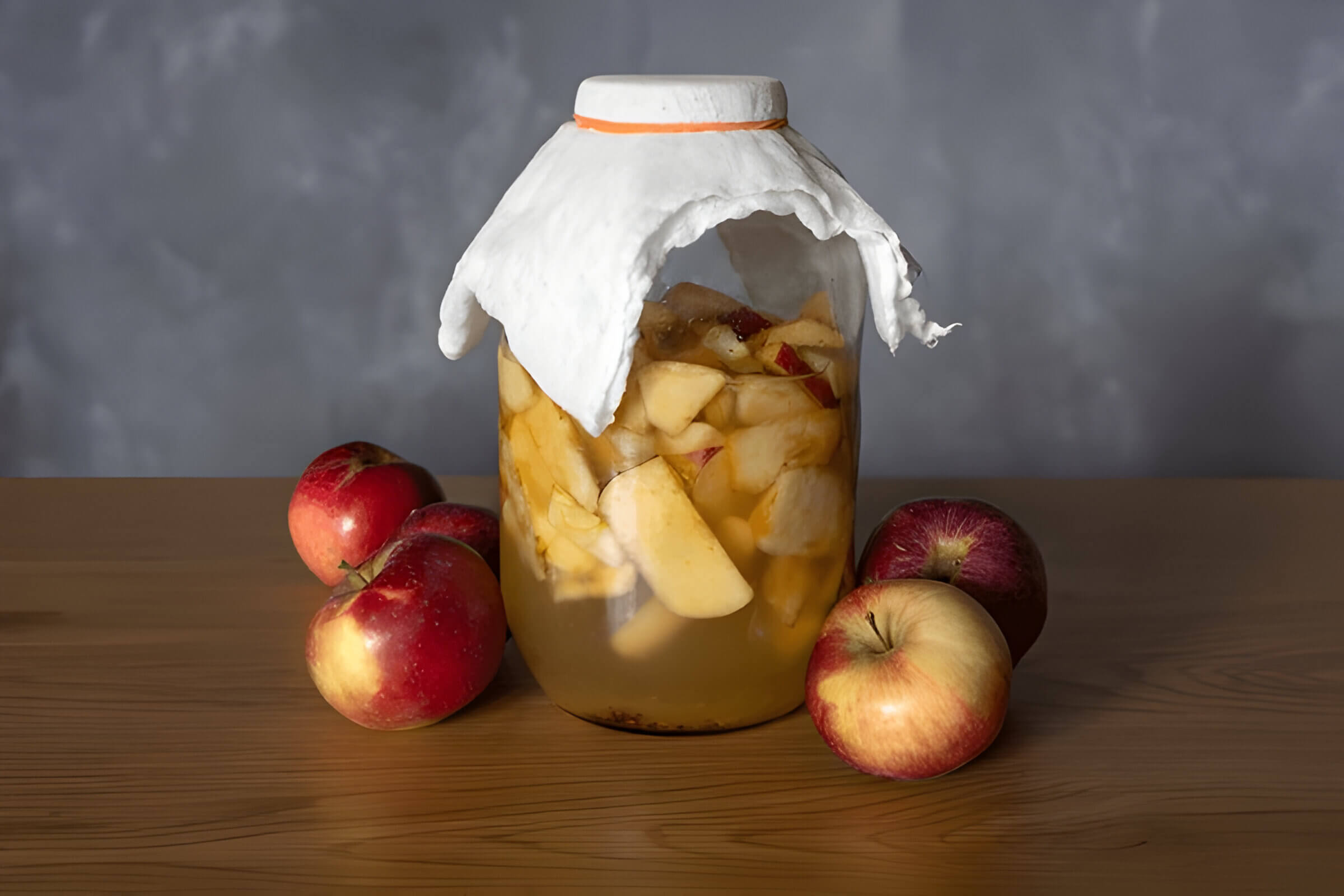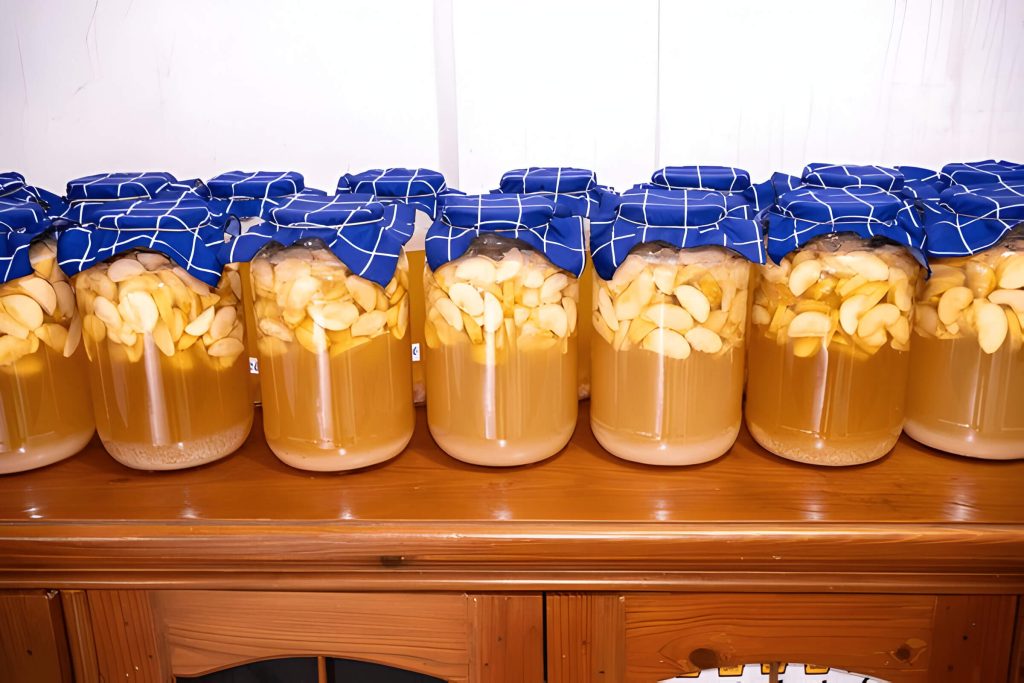
Vinegar, a kitchen staple, has a rich history and diverse applications dating back to ancient civilizations. This guide explores its natural fermentation process, origins, types, and production science. Learn about key ingredients for homemade vinegar and master the step-by-step fermentation process. It also addresses common production issues and highlights the benefits and uses of natural vinegar. Join us on this journey from simple sugars to tangy elixirs through natural fermentation.
Understanding the Basics of Vinegar and Its Historical Significance
Vinegar, a staple in kitchens worldwide, is more than just a condiment. But what is vinegar exactly? At its core, vinegar is an acidic liquid produced through the natural fermentation of ethanol by acetic acid bacteria. This process results in a tangy flavor and a wide range of culinary and non-culinary uses.
The history of vinegar dates back thousands of years. Ancient civilizations such as the Babylonians around 5000 BC used vinegar not only for cooking but also for medicinal purposes and as a preservative. The Egyptians, Greeks, and Romans followed suit, recognizing its versatility. In fact, Hippocrates, the father of modern medicine, prescribed vinegar mixed with honey for various ailments.
There are several types of vinegar available today, each with unique characteristics derived from different sources and fermentation processes. Common varieties include white vinegar made from grain alcohol; apple cider vinegar produced from fermented apple juice; balsamic vinegar originating from Italy’s Modena region; rice vinegar common in Asian cuisine; and wine vinegars created from red or white wine.
Vinegar’s enduring popularity can be attributed to its diverse applications throughout history. From ancient uses as an antiseptic to modern-day salad dressings and cleaning solutions, this remarkable liquid continues to play an essential role in our lives.
How Fermentation Works Behind Vinegar Production

Vinegar production is a fascinating biochemical process that hinges on the art of fermentation. At its core, the transformation from ethyl alcohol to acetic acid is driven by specific microorganisms known as acetic acid bacteria. These bacteria play a crucial role in converting ethanol, commonly found in alcoholic beverages, into acetic acid through a series of metabolic reactions.
The fermentation process begins with an alcoholic substrate, such as wine or cider. When exposed to oxygen, acetic acid bacteria like Acetobacter and Gluconobacter species initiate the conversion process. These microorganisms oxidize ethanol into acetaldehyde and subsequently into acetic acid. This conversion not only imparts vinegar with its characteristic tangy flavor but also preserves it due to the acidic environment created.
Understanding this biochemical process is essential for producing high-quality vinegar consistently. Factors such as temperature, oxygen availability, and the concentration of ethanol must be carefully controlled to ensure optimal conditions for bacterial activity. By mastering these variables, producers can harness the full potential of fermentation to create various types of vinegar with unique flavors and properties.
Vinegar production is an intricate dance of microbiology and chemistry where acetic acid bacteria transform ethyl alcohol into acetic acid through a well-orchestrated fermentation process. This knowledge allows producers to craft vinegars that are not only flavorful but also safe and stable for culinary use.
What You Need to Make Vinegar at Home Naturally
Making vinegar at home naturally is a rewarding process that requires just a few key ingredients and some patience. The primary elements you need are sugar sources, which can come from various fruits or grains. These sugars will ferment into alcohol and then further into acetic acid, the main component of vinegar.
For fruit-based vinegar, apples are a popular choice due to their high sugar content and rich flavor profile. Apple cider vinegar ingredients typically include apple peels, cores, water, and natural sugars. Other fruits like grapes, berries, or pears can also be used to create unique flavors.
Grain-based vinegars often start with barley malt or rice as the sugar source. These grains undergo fermentation to produce alcohol before converting into vinegar through the natural action of acetic acid bacteria.
To make homemade vinegar, you’ll need your chosen sugar source (fruit or grain), water to dilute the sugars and facilitate fermentation, and a starter culture like unpasteurized vinegar that contains live bacteria. This starter helps kickstart the fermentation process by introducing beneficial bacteria that convert alcohol into acetic acid.
By understanding these basic ingredients, you can experiment with different types of homemade vinegars that are tailored to your taste preferences. Whether you’re aiming for a tangy apple cider vinegar or a robust grain-based variety, the process remains grounded in simple yet essential components.
Step-by-Step Guide to Making Vinegar Naturally at Home
Making vinegar naturally at home is a rewarding and straightforward process that involves natural fermentation steps. With just a few basic ingredients and some simple home brewing equipment, you can create your own vinegar with unique flavors.
Step 1. Gather Your Ingredients and Equipment
To start, you’ll need a few key items:
– Base Liquid: This could be wine, cider, or beer.
– Mother of Vinegar: A culture of acetic acid bacteria.
– Home Brewing Equipment: A glass jar or ceramic container, cheesecloth or breathable fabric, rubber band, and a funnel.
Step 2. Prepare the Base Liquid
Pour your chosen base liquid into the glass jar. If you’re using wine or cider, ensure it’s unpasteurized for best results. The base liquid should fill about two-thirds of the container to allow space for fermentation.
Step 3. Add the Mother of Vinegar
Introduce the mother of vinegar into the jar with your base liquid. The mother will kickstart the fermentation process by converting alcohol into acetic acid.
Step 4. Cover and Store
Cover the jar with cheesecloth or breathable fabric secured with a rubber band. This allows airflow while keeping out contaminants. Store the jar in a dark, warm place (ideally between 60-80°F).
Step 5. Fermentation Process
Allow natural fermentation to occur over several weeks to months. During this period, regularly check on your mixture but avoid stirring it as this can disrupt bacterial activity essential for producing vinegar.
Step 6. Taste Test and Bottle
Once you notice a strong vinegar smell and tangy taste (usually after one to three months), strain out any solids using a funnel lined with cheesecloth before bottling your homemade vinegar in sterilized containers.
By following these natural fermentation steps diligently using proper home brewing equipment for vinegar making process ensures you achieve high-quality homemade vinegar every time!
Troubleshooting Common Issues in Natural Vinegar Making
Natural vinegar making is a time-honored process that can sometimes present challenges. Understanding vinegar production problems and solutions is key to ensuring a successful batch. Here, we address some common issues and how to manage them effectively.
One frequent problem encountered during fermentation is the growth of mold. Managing mold during fermentation is crucial as it can spoil the entire batch if not addressed promptly. To prevent mold, ensure that your fermenting container is properly sanitized before use and always keep it covered with a breathable cloth to allow airflow while keeping contaminants out. If you do spot mold, carefully remove it using a clean utensil without disturbing the fermenting liquid too much.
Another critical factor in vinegar production is maintaining the ideal temperature for the fermentation process. The optimal temperature range for vinegar fermentation typically lies between 60-80°F (15-27°C). Temperatures outside this range can slow down or even halt the activity of acetic acid bacteria responsible for converting alcohol into acetic acid. Using a thermometer to monitor your environment and adjusting as necessary can help maintain consistent conditions conducive to successful vinegar making.
By being vigilant about these common issues and implementing effective solutions, you can enhance your natural vinegar production process, ensuring each batch meets your expectations.
The Benefits and Uses of Naturally Made Vinegar in Everyday Life
Naturally made vinegar is a versatile household staple that offers numerous benefits and uses in everyday life. One of the most notable health benefits of natural vinegars is their ability to aid digestion and balance blood sugar levels. Rich in acetic acid, these vinegars can help improve nutrient absorption and support gut health.
In the kitchen, cooking with homemade vinegars can elevate the flavor profile of various dishes. Whether used in salad dressings, marinades, or as a tangy addition to sauces, natural vinegars bring a unique zest that enhances culinary creations.
Beyond cooking, natural vinegars are also effective for cleaning purposes. Their acidic nature makes them excellent for disinfecting surfaces, removing stains, and eliminating odors without the use of harsh chemicals. A simple mixture of vinegar and water can clean windows, countertops, and even freshen up laundry.
Preserving food with vinegars is another traditional practice that remains relevant today. Pickling vegetables or creating flavored preserves with natural vinegars not only extends shelf life but also adds distinctive tastes to your pantry staples.
Lastly, the medicinal uses of natural vinegars have been recognized for centuries. They have been used as remedies for sore throats, skin irritations, and even as an energy booster when diluted with water and consumed regularly.



